Think about this for a moment: no lights, no air conditioning, no cold water, no potable water, no flush toilets likely too, no food (because food supplies cannot get there) and here are some of the daytime temperatures at 80% to90% humidity:
Del Rey Beach 90 degrees Fahrenheit
Miami 86 degrees
Key West 85 degrees
Tampa 87 degrees
Naples 85 degrees
begin quote from:
15 million Floridians in the dark
OPINION: Irma reminds Europe of its awkward colonial rule
25% of Florida Keys houses destroyed as 15 million Floridians have no power
Story highlights
- "A lot of people lost everything. There's homes blown off the stilts," resident says
- Power back on for 330,000 businesses, organizations, homes in Broward County
(CNN)As
some Florida Keys residents return to their devastated islands Tuesday,
15 million Floridians are learning when they'll finally get power back.
All customers who
lost electricity on the eastern side of the state will likely have power
restored by the end of this weekend, Florida Power & Light said
Tuesday.
An FPL official
told reporters at a Broward County news conference that of the 790,000
customers in that county who lost power, 330,000 had their electricity
restored Tuesday.
The
company is focusing its efforts first on schools, hospitals and other
critical infrastructure. Gas stations and restaurants are next on the
plan, the official said.
Customers
on the west coast of Florida, where Hurricane Irma made its final
landfall, will likely have power restored by September 22, the company
has said.
It's
a long wait for those sifting through what's left of their homes in the
oppressive heat, bombarded by high humidity and relentless mosquitoes.
But
residents like William Rose have bigger concerns. Rose still can't
reach his family on the Florida Keys, where about a quarter of the
islands' houses are annihilated.
He's not sure whether his mother, stepdad, grandmother and aunt survived Irma's wrath.
"I have no idea, but I'm trying to stay positive," Rose said.
Before the Keys lost cellphone service, Rose received a text from his mother, who chose not to evacuate.
"This is terrible. I will never do this again," the text read. "I'm so glad you got out."
Mass destruction in the Keys
Two
days after Irma made landfall on Cudjoe Key, authorities and residents
were finally able to reach some of the Florida Keys on Tuesday.
What they found was devastating: Based on initial estimates,
25% of the houses on the chain of islands have been destroyed, the
Federal Emergency Management Agency said Tuesday. Another 65% suffered
major damage.
"Basically, every house in the Keys was impacted some way," FEMA Administrator Brock Long said.
It's
still not clear how many casualties Irma caused on the Keys.
Transportation officials are trying to determine whether bridges between
the islands can withstand any weight.
The
Florida Department of Transportation is repairing two sections of road
that were washed away by Irma -- one at mile marker 37 and the other at
mile marker 75 -- but believe they will finish later Tuesday.
Darwin Tabacco, who stayed on Big Pine Key during Irma, is one of the fortunate residents. Both he and his house survived.
"A
lot of people lost everything," he said Tuesday morning. "There's homes
blown off the stilts. There's power lines down all over the place.
Trees completely uprooted. People's businesses flooded. Septic fields
flooding. It's just terrible."
15 million people without power -- just in Florida
Massive power outages are crippling much of the Southeast on Tuesday. Among the hardest hit by Irma:
- Florida: About 15 million people are without power across the state, Christopher Krebs of the Department of Homeland Security said Tuesday.
- Georgia: More than 1.3 million customers -- which includes households and businesses -- are in the dark, according to Georgia Power and Georgia EMC.
- South Carolina: 161,000 customers lost power, according to Duke Energy and SCE&G.
- North Carolina: More than 62,000 customers don't have electricity, according to Duke Energy.
- Alabama: More than 20,000 customers lost electricity, Alabama Power said Tuesday.
9 states impacted
Irma,
which stretched 650 miles from east to west, has pummeled at least nine
states -- deluging city streets, uprooting trees and destroying homes
along the way.
At least eight storm-related deaths have already been reported, according to local officials:
- Florida had three deaths. A 51-year-old man was electrocuted by a downed power line in Winter Park. A driver died in a crash on State Road 417. And another person died in Miami-Dade County from carbon monoxide poisoning after using a generator indoors.
- Georgia had three deaths. A 62-year-old man who was on his roof was killed in Worth County, which experienced wind gusts of 69 mph. Another man was killed in Sandy Springs when a tree fell on his house. And a woman was killed when a tree struck her vehicle in Cumming.
- South Carolina had two deaths. A 57-year-old man was struck by a falling tree limb during the storm. State emergency officials said a driver with a Florida license plate also died from the storm, but did not give further details.
Florida governor: Returning home may be dangerous











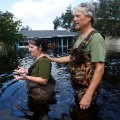
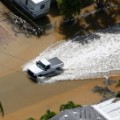



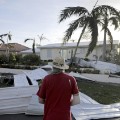
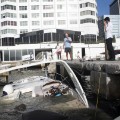
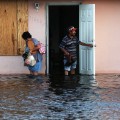

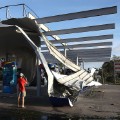


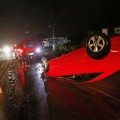

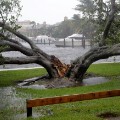
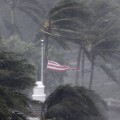



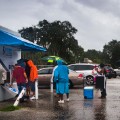

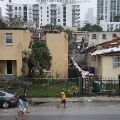
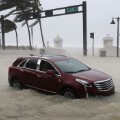


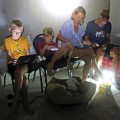
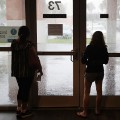



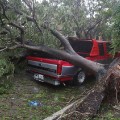



Beyond the Keys, Floridians were anxious to return and see how their homes weathered the storm. But officials urged patience.
"Check with local officials before returning home to make sure you can safely do so," Gov. Rick Scott said Monday.
"Don't
think just because this thing passed, you can run home. We've got
downed power lines all across the state. We've got roads that are
impassible still across the state. We've got debris all over the state."
Flights, hospitals will be back online
While the Keys have an exhaustive recovery ahead, signs of normalcy will pop up Tuesday elsewhere in Florida.
Many of Florida's airports are scheduled to reopen with limited operations Tuesday.
And
Florida Hospital, a health provider in the state, said it plans to
reopen many of its impacted facilities on Tuesday or Wednesday.
Mammoth flooding
Even a weakened Irma engulfed cities as far north as Charleston, South Carolina, on Tuesday.
"I
really didn't expect it to become this bad here," Charleston resident
Mike Stusnick said Tuesday. "It came in really fast last night. ... We
were just praying that it didn't come all the way into the house, and it
didn't."
Jacksonville, Florida --
the largest city by area in the contiguous United States -- is still
trying to recover from record-breaking storm surge and flooding on
Monday.
More than 300 people have been rescued in Jacksonville, the governor said Tuesday.
"So many areas that you thought wouldn't flood, flooded," Scott said.
Irma's deadly trail -- and questions about climate change
Before slamming into the United States, Irma hit Cuba late Friday as a Category 5 hurricane. Irma killed 36 people in the Caribbean before heading to the United States.
This
is the first year on record that the continental United States has had
two Category 4 hurricane landfalls in the same year. Last month,
Hurricane Harvey devastated much of coastal Texas and killed more than 70 people.
At
a news conference Tuesday, both the FEMA administrator and acting DHS
Secretary Elaine Duke avoided explicitly answering questions about
whether Washington needs to focus more on climate change after Harvey and Irma.
Instead, Long and Duke stressed the need for preparedness and resiliency.
Are
you affected by Irma? Text, iMessage or WhatsApp your videos, photos
and stories to CNN (but only if it's safe to do so): +1 347-322-0415.












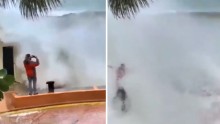


















































No comments:
Post a Comment